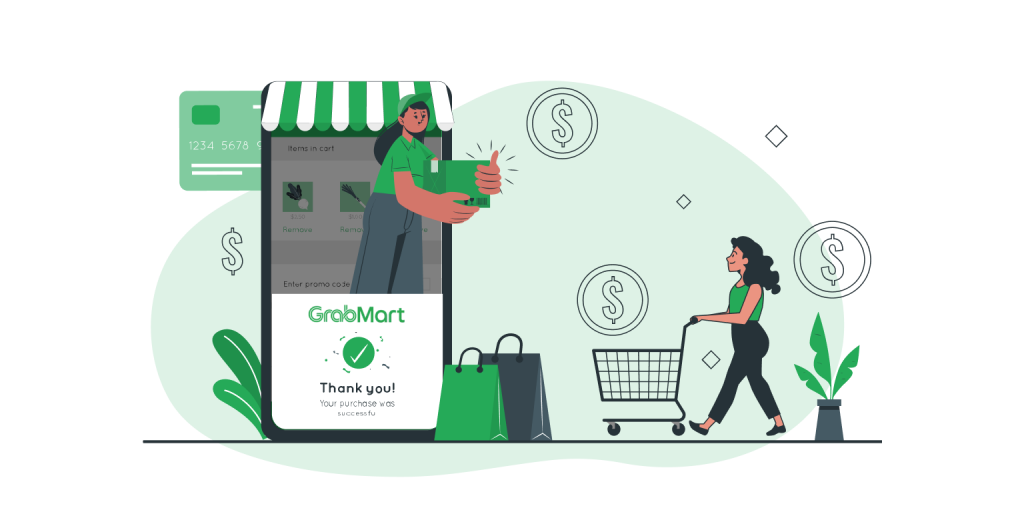
As a most popular superapp in Southeast Asia, GrabMart offers commonplace services including ride-hailing, food delivery, payments, and more. We’d want to share their experience learning about the demand for GrabMart and working as a team to create it in this blog.
With daily services that matter to customers, Grab is the top superapp platform in Southeast Asia. Grab provides a comprehensive range of on-demand services in the region, including mobility, food, package, and grocery delivery services, mobile payments, and financial services throughout 428 cities in eight countries. Grab is more than just a ride-hailing and restaurant delivery app.
GrabMart has worked with more than 3,000 retailers in the area since it began as an on-demand delivery service for daily necessities to assist customers during the COVID-19 pandemic. These prominent chains include FairPrice Xpress, FamilyMart, Mahnaz Food, Maxvalu, and Tops, among others.
GrabMart offers customers an easy method to buy a variety of consumer goods, including groceries, household necessities, cosmetics, presents, and much more. GrabMart gives businesses a new way to connect with the enormous number of customers who are increasingly making purchases online.
“COVID-19 has pushed the uptake of on-demand delivery services across Southeast Asia, and they were able to quickly scale GrabMart across the region by leveraging already-in-place technologies, their sizable delivery network, and their operational footprint. They expect the demand for delivery services to continue high in the post-COVID19 normal. Demi Yu, Regional Head of GrabFood and GrabMart, stated that we would continue to focus on developing our GrabMart service to meet the needs of consumers.
From Daily Necessities to Everyday Purchases
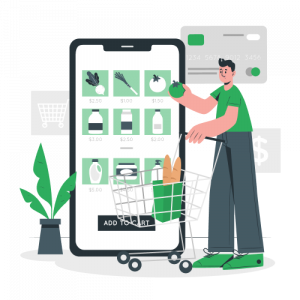
Customers can shop and place orders from convenience stores, supermarkets and specialised stores using GrabMart, and have their purchases delivered in less than an hour or at a predetermined time. Beverages, snacks, veggies, pantry essentials, and instant noodles were the most popular categories of goods sold on GrabMart.
GrabMart provides;
- An easy approach to purchase daily necessities:
Leading regional convenience store chains like FamilyMart in Indonesia, the Philippines, and Thailand, Cheers and Fairprice Xpress in Singapore, myNews.com in Malaysia, Lawson in the Philippines, and others have partnered with Grab Mart.
- A quicker method to replenish fresh food and supplies:
With well-known supermarkets and hypermarkets including Tops and Maxvalu in Thailand, Big C in Vietnam, and Robinsons Supermarket in the Philippines, GrabMart has signed partnerships. Customers in Singapore and Indonesia can get premium meats and fresh veggies from local vendors and urban farms. Additionally, GrabMart has collaborated with nine conventional market owners in Malaysia and Indonesia to enable hundreds of their tenants to go online for the first time.
- An answer to last-minute buying needs:-
Customers no longer have to worry about a last-minute trip to the pharmacy, bookshop, or even the florist thanks to Grab Mart. In order to provide consumers with an even wider selection of goods on GrabMart, Grab has partnered with numerous specialty and mini-market businesses including Guardian in Indonesia and Malaysia as well as XpressFlower in Singapore.
Major Retail Chains are Now Available on GrabMart
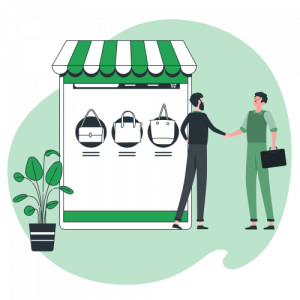
Indomaret, an Indonesian convenience store chain with over 15,000 locations, Big C, a Thai hypermarket chain with over 1,000 stores, Lotus’s Malaysia (previously known as Tesco Malaysia), with over 62 locations, S&R supermarket in the Philippines, known for its attractive members-only discounts, and Mega Market, a top wholesaler and distributor of grocery products, are among the new partners joining GrabMart. Customers will have the option of shopping from these stores, having their items delivered immediately to their doors or at a later time, and earning Ovo Rewards and GrabRewards points for their purchases.
Grab intends to test “Shopper,” a shopping assistant solution, in a few select supermarkets as a result of an increase in the number of collaborations with supermarkets in the region. The “Shopper” digital shopping list, which is integrated into the Grab Driver superapp, makes it simple for retail employees to pick and pack customers’ grocery items while they navigate store aisles. Retail staff can use the GrabChat function of the app to transmit photographs of the items and tell customers in real time if they are sold out, as well as to recommend possible substitute possibilities. For transparency’s sake, any modifications to customers’ initial orders will be transparently reflected on the Grab user app.
“Consumers are placing bigger supermarket orders on GrabMart as online grocery shopping becomes more popular. The experience for customers using our new shopping assistant service will significantly improve.
Currently, GrabMart is accessible in all eight of its operating markets. GrabMart is a one-stop shop for buying groceries and other necessities. It offers scheduled, next-day, and rapid deliveries to accommodate different customer needs and price points. In Singapore, Malaysia, and the Philippines, GrabMart also manages its own online supermarket brand under the name GrabSupermarket.
How will your grocery delivery service be different from the rest? What tactics ought you to employ? What features ought to be included in your app for grocery delivery? For entrepreneurs looking to advance their careers in the online grocery sector, this remains a significant question. One of the most important factors in determining whether or not a grocery app will succeed is its features and functionality. Given the features, it is ultimately the best option that your consumers are seeking for.
The Mart Experience Redefined
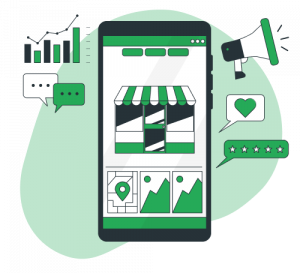
The team was driven to develop a new version of GrabMart that better matched the needs of our consumers because of the regional growth of GrabMart, which was growing exponentially at a rate of 50% week over week.
Their notion that ordering meals online is very different from doing your grocery shopping online was confirmed by our user study. The natural journey customers take at a grocery shop on the app would have been utterly missed if we had tried to replicate the GrabFood user experience for GrabMart. Grocery shopping, as an illustration, starts at an item level as opposed to a merchant level (as with GrabFood). By recognising this distinction, we were able to draw attention to item categories on the GrabMart home page as well as the search results page. Additional noteworthy results from user research include:
Store/Item Categories: Users that have a certain store in mind frequently search for that store directly. This behavior is comparable to that of offline retailers. Users search when they’re not sure where to find a particular thing.
Place in Cart: Users frequently add familiar items to their shopping carts without clicking to read more about them. Only when purchasing more recent things may one access the product details.
Delivered on time: Every customer has various requirements when it comes to delivery time. Others would rather wait longer if it meant paying a lower delivery price, while some would rather pay more for speedier delivery. Due to this, we decided to offer scheduled delivery for non-urgent items and on-demand delivery for urgent sales.
The New Experience at GrabMart
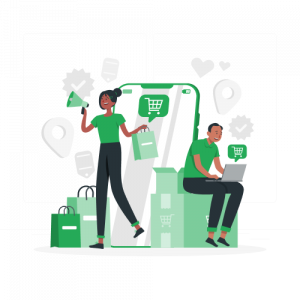
We split the deliverables into two main releases in order to achieve our deadlines, and we received early feedback from internal users via our Grab Early Access (GEA) programme. Since GEA allows customers a sneak preview of planned app features, we can fix any problems they run into before the product is made available to the broader public. Additionally, we made some significant adjustments that were needed across a number of Grab systems, including the order management system to accommodate the new mart order type, the allocation system to assign the proper driver for mart orders, the merchant app, and our Partner APIs to help merchants efficiently prepare mart orders.
We rigorously prioritized the features to be produced using user research, country insights on grocery shopping behavior, and other factors. We created the Store categories for those who buy for their weekly groceries, and the Item categories to serve customers who needed to quickly restock a few products. To make it simpler for customers to add items to their basket, especially if they have a big list of goods to purchase, we designed add-to-cart. For our Indonesian customers who prefer to pick up their products in person, we also offered Scheduled Delivery.
Through this blog, we’ll go into great detail on the features that grocery delivery services use to draw customers in, meet their needs, increase sales, and improve customer retention.
How to Utilize Grocery Apps for Maximum Efficiency
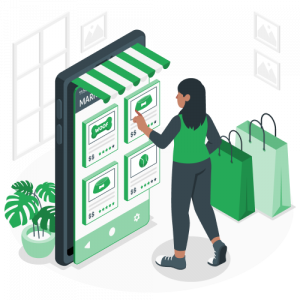
Customers, store owners, admins, and delivery personnel are all included in the grocery delivery app. You must create the application for each of these four in order to launch your on-demand grocery delivery service. Essential grocery app elements that facilitate quick access to the services should be included in each app. For each of the four, we have outlined the key characteristics, which include:
(1)Application for consumers
The first comes the customer app. This application will be specifically designed for buyers who want quick and reliable grocery solutions. Through the customer app, they will be able to locate nearby grocery stores, make the order, and get it delivered to their location. A few grocery delivery app features that will make the customer app engaging and more useful are:
simple registration or login:
What would your customers do initially when they use your online grocery delivery app? If they already have an account, they must sign in or log in. Therefore, their first move ought to be as simple as possible.
You should provide multiple methods for consumers to register and log in on the app, such as face recognition, social media, email addresses, and phone numbers. Users should only require the bare minimum of information to get going.
One of the most important aspects for the grocery delivery app is easy search for items. Users would want to locate the desired objects to add to the app after they log in.
Easily find groceries:
One of the most important elements for the grocery delivery app is easy search. Users want to find the desired things to add to the cart quickly after logging into the app. It should take little time and be quick.
You can make a list of all the grocery goods and retailers and categorise them according to the name, location, and type of product (fruits, vegetables, packaged meals, etc.) to assure the viability of this function. The classification will enable customers to quickly navigate to the necessary category and select the item.
Locate the nearest supermarkets:
Connecting with nearby retailers to get their orders delivered quickly is one of the main factors for users to download a grocery app. In order to avoid this, remember to include the “find nearby grocery stores” option while creating an on-demand grocery delivery app.
Using this tool, a user can easily look up the closest grocery store. Customers can also learn about the grocery store’s reviews, which include information about the list, return policies, rapid delivery, and product quality. In general, consumers may rapidly discover grocery stores based on the attributes of the store that meet all of their needs.
Delivery of customized goods:
The fast-paced world of today requires customers to plan ahead. Offering clients the option of personalized deliveries for their grocery delivery is just one way to do this.
Customers can take advantage of the scheduled order delivery service feature to get their things delivered promptly and fresh without compromising on either quality or service. Therefore, keep this aspect in mind when creating an online store because your customers will value it.
A push notification:
The best strategy for developing closer relationships with your clients is to keep them informed about the most recent developments, seasonal specials, and many other real-time changes.
According to 63% of mobile users, they are likely to make a purchase from apps that offer useful recommendations.
You can use this to inform your consumers of upcoming sales. Push notifications can also send the message about on-time delivery. The online store’s push notification system provides users with timely and personalized content.
Implementing payments:
Given that it will be necessary each time a user puts an order, the payment feature will be one of the most often utilized grocery app features. Give your customers the opportunity to pay with the utmost convenience using their favourite payment method. Different payment channels, including credit cards, mobile wallets, debit cards, UPI, and other methods, can be integrated.
Keep in mind that users will enter and reveal their personal financial information while making a payment. Consequently, the procedure should be completely secure.
Earlier orders:
Another essential element for the delivery app is order history. Customers occasionally need to place multiple orders for groceries. As a result, they will be able to immediately repeat the order thanks to the order history feature.
(2)Application for grocery store
The grocery store app is the next to appear after the consumer app. Your grocery delivery app won’t be successful until you collaborate with and register with local, reputable retailers that have the necessary inventory and can deliver groceries to clients online. The grocery shop app should have a few key components, such as:
Managing a catalog:
With the shifting demand and supply of groceries, the store owner might need to alter the specific information. The catalog management tool will therefore provide them total control over it.
They should be able to create, modify, and manage their product catalog using the functionality, which should also let them add new categories, rename products, and give descriptions, pricing, and photographs for those products in addition to changing their names and renaming them.
Report on sales and other analysis:
To plan their upcoming plans, store owners need regular updates on the volume of sales they have generated. Sales reports and other types of analysis are therefore essential components.
They will receive a thorough sales analysis and comparison to prior months. They will also get access to other vital details like the number of clients, their location, and the kinds of groceries they buy from them most frequently.
Financial management:
Financial statements are yet another crucial piece of information that grocery business owners need to continually be aware of. Their one-stop shop for all of their financial problems will be the finance management features.
Knowing their exact earnings, earnings on particular days, collections from particular locations, the best profits from a given item, and other information will be helpful to store owners. Such details will offer in-depth knowledge for better decision-making in the future.
Inventory control:
Vendors should be able to control the amounts of their inventory with the best on-demand grocery delivery app. There will always be a need to carefully review the inventories, regardless of what type of grocery shop the owner operates.
They should be able to update inventory quantities, receive alerts when supplies are running short, and give pertinent data such as which stocks are utilized the least and most frequently, among other things.
Client interaction:
How do we make sure customers order the proper things from the store? Allowing the client and the owner to speak when necessary is one approach to ensure this.
Therefore, the vendor app should enable suppliers to communicate with clients via the app, where they can rapidly address their questions and give real-time information on the status of their orders.
Promotions and marketing:
To draw in more consumers, each grocery store will strive to be at the top of the list. As a result, expanding the vendor app to include marketing and promotional features will help your online grocery store business.
(3) Application for delivery agents
The delivery agent app follows after that. After the user puts an order and the business accepts and prepares it, the order is given to a specific delivery agent who is in charge of delivering it at the appropriate time and location. Therefore, all of the features in the delivery agent app should aid in the delivery guy’s ability to complete deliveries quickly.
GPS and navigation:
The grocery delivery app must have a navigation and GPS capability in order for the delivery person to deliver the order to the right place.
The function will guarantee timely deliveries because the built-in GPS and navigation will show the best and quickest route to the destination and make sure the delivery person is aware of their whereabouts.
Manage orders:
Another vital component of the delivery app is order management. The delivery worker should be able to see every order clearly because he will be dealing with numerous orders each day.
The delivery team should be able to manage orders using the app, examine order data, and update their status.
Total income:
Information about delivery agents’ salaries is another item that should be provided to them. Your on-demand grocery delivery app ought to have a section where the delivery men can access any financial data.
Along with overall profits, the feature should also incorporate delivery costs and tips. Knowing the agent’s collection for any given month will be of further assistance.
(4)Application for Admin
The admin app comes last. The app that provides grocery delivery is overseen by an admin. The app’s content, finances, customer information, delivery services, and vendors are entirely under the admin’s control. To simplify the procedure for the administrator, it’s important to add the following capabilities in grocery delivery apps:
Dashboard:
The dashboard function is the admin’s first and most crucial feature. The admin will have a clear picture of everything going on with the grocery delivery app thanks to the dashboard.
This feature ought to make it easier for the admin to access comprehensive information about the application, from examining all orders to the total number of customers, their details, delivery agents, total orders, complete sales, and current orders.
Management of content:
An app for grocery delivery has material that is managed by the admin. Therefore, including this in the construction of the admin app is essential.
The functionality should make it possible for the administrator to control and edit the text, photos, and other material used in the interface of the online grocery delivery app.
Reporting and analytics:
For admins to take the appropriate actions for future growth, a thorough reporting of everything is also required. So, this is yet another function that cannot be skipped while creating a grocery delivery app for the administrators.
The app administrator should have access to a thorough report on the development of the human resources, financial, and marketing plans. The administrator can identify the issues using actual figures and graphs.
Cash flow and billing:
The admin app’s settings can be accessed whenever you’d like, giving app owners total control. One such element is receiving and sending money.
Your on-demand grocery delivery software should have a payment and billing function that enables admins to collect money from suppliers, create invoices for delivery personnel, and pay those individuals.
Create an app for groceries delivery with the best features
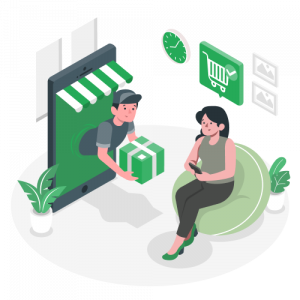
Why are you being kept waiting? As soon as you can, turn your concepts into a grocery-related app. With Sigosoft, the leading grocery app development company, you may increase your possibilities. We can design adjustable, user-friendly parts using flexible, user-friendly technologies. Additionally, Sigosoft offers the top services for developing supermarket apps like GrabMart that offer great opportunities for interaction with users. You need to create a strong application that achieves the required outcome now that you are aware of the aspects that must be included in your grocery delivery app. You require a skilled on-demand app development company, such as Sigosoft, to guarantee the quality and functionality of each component. With the best features to make sure every user of your application has a wonderful experience and is happy with the services, our committed team of developers can create a grocery delivery app similar to GrabMart. Reach out to our developers right now, and let’s get your app developed.